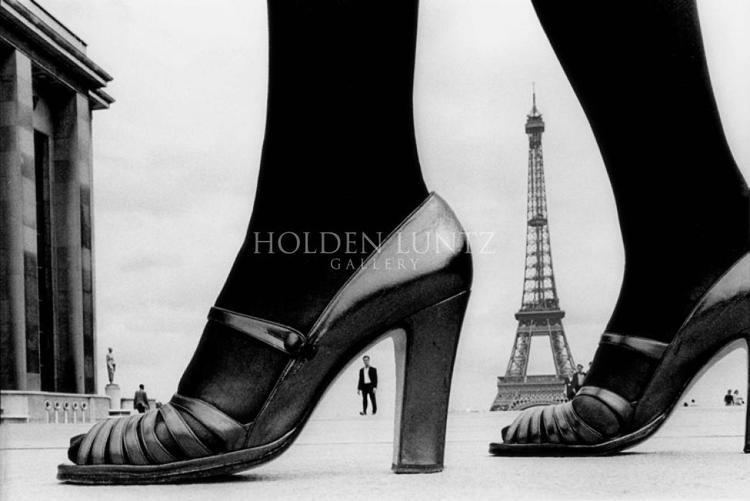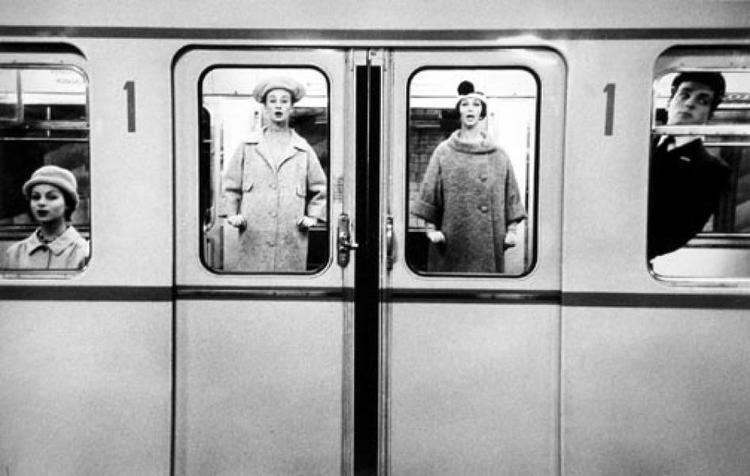Occupation Photographer Name Frank Horvat | Books Entre vues, Very similar | |
 | ||
Born April 28, 1928 (age 97) ( 1928-04-28 ) Abbazia, Italy | ||
The dignity song by frank horvat and adam c nihmey
Frank Horvat is a photographer born on April 28, 1928 in Opatija (Croatia), presently living and working in France. There is some misconseption on Horvat's origin, given that he was born in Croatia when it was partially taken by Italians. Nevertheless, he is a Croat, born in Croatia to a Croat family. He is best known for his fashion photography, published between the mid 1950s and the end of the 1980s, but his photographic opus includes photojournalism, portraiture, landscape, nature and sculpture. In 1988, he produced a major book of interviews with fellow photographers (such as Don McCullin, Robert Doisneau, Sarah Moon, Helmut Newton, Marc Riboud). At the beginning of the 1990s, he was one of the first to experiment with Photoshop. In 1998, he replaced his professional equipment with a compact camera, which he always carries in his pocket, in order to shoot anything, at any moment that seems to him of some interest. In 2011, he put online his first iPad application (Horvatland).
Contents
- The dignity song by frank horvat and adam c nihmey
- Earth hour 60 minute piano piece by frank horvat excerpt
- Biography
- The 1950s
- The 1960s and 1970s
- The 1980s
- The 1990s
- The third millennium
- Exhibitions
- Collections
- Filmography
- References

Earth hour 60 minute piano piece by frank horvat excerpt
Biography

Born in a Jewish family from Central Europe (his father Karl was a general physician from Hungary, his mother Adele a psychiatrist from Vienna), Horvat has lived in several countries (Switzerland, Italy, Pakistan, India, England, USA). In 1955, he settled in France, while continuing to commute in Europe, to often work in New York.
The 1950s

Horvat acknowledges having been strongly influenced by Henri Cartier-Bresson. After meeting him in 1950, he follows his advice, by replacing his Rollei with a Leica Camera and embarking on a two-year journey in Asia, as a free-lance photojournalist. His photographs from this trip are published by Life, Réalités, Match, Picture Post, Die Woche and Revue, and one of them is included in the famous Family of Man, at the New York MOMA.

As many photographers of his generation, Horvat realizes that a 35 mm camera allows a greater timeliness of execution, and that by using lenses of different focal length he can explore aspects of reality that otherwise may not catch his eye. In 1955, for instance, after moving from London to Paris, he finds that the mood of its streets and its inhabitants has little in common with the somewhat romantic vision of the so-called humanist photographers, while a hand-held 35 mm reflex, with a 400 mm lens, his attention attached on one or two aspects which will be impossible with another camera. The Swiss magazine Camera devotes a full issue to his essay.
In 1957, Horvat moves to a different branch of photography, by shooting fashion for Jardin des Modes. But he holds on to 35 mm cameras and available light - which formerly had rarely been used for fashion. The innovation is welcomed by ready-to-wear designers, because it presents their creations in the context of everyday life for which they are meant. In the following years, he is commissioned to do similar work for Elle in Paris, Vogue in London, Harper’s Bazaar in New York and others follow his lead.
The 1960s and 1970s
Between 1962 and 1963, Horvat reverts to photojournalism, with a trip around the world for the German magazine Revue. Then he experiments with cinema and video. In 1976, he decides to "become his own client", by producing three personal projects: Portraits of Trees (1976–82), Very Similar (1982-86) and New York up and down (1982–87), which he calls his "triptych", even though the three are so diverse. The three are in colour.
The 1980s
In the 1980s, Horvat suffers from an eye disease and for some time has to replace his eyes with his ears. He begins a new project: a series of interviews with fellow photographers, such as Edouard Boubat, Robert Doisneau, Mario Giacomelli, Josef Koudelka, Don McCullin, Sarah Moon, Helmut Newton, Marc Riboud, Jeanloup Sieff and Joel-Peter Witkin. They are published in France, under the title Entre Vues.
The 1990s
In the 1990s, he takes an even more radical step, by adopting computer technology. First with Yao the Cat (1993), then with Bestiary (1994) and Ovid’s Metamorphoses (1995), he transgresses the cartier-bressonian rule of the ‘decisive moment’, by combining parts of images shot at different times and in different places. The novelty is not so much the photomontage, as the ambiguity created by the almost seamless assemblage, even if Horvat admits that these compositions should possibly be called by some other name than "photography". Partly for this reason, he interrupts these experiments, and only resumes them 14 years later, with a more subtle approach, in A Trip to Carrara.
He associates traditional photography - first on analog, then on digital media – with digital postproduction such as in Figures Romanes (published in 2000, with a text by Michel Pastoureau) is the result of a 2-year exploration of Romanesque sculpture, an art that flourished between 1100 and 1200 AD
The third millennium
His next three projects are possibly his most personal. 1999 is the photo-diary of the last year of the millennium, shot with a tiny analog camera designed for amateurs. Such as Entre Vues, La Véronique begins with his physique condition. He takes picture with the first digital Nikon, within a 30 meters range, either inside his home in Provence or in its immediate surroundings. Eye at the fingertips, started in 2006 and still in progress, is photographed with a digital compact camera.
In all three, Horvat explores the miracles of everyday life, unlike the widespread tendency of photographing whatever seems exceptional or extreme. But what he likes to point out is that these photographs, that look like candid shots and are done with a camera that any amateur could own, represent something like the sum of his life’s visual and emotional experiences, reduced to their core by a merciless elimination - whether at the moment of shooting, at the time of editing or in the process of postproduction – of what he considers superfluous or distracting.
His latest enterprise is an iPad application called Horvatland : a trip through a mind, containing more than 2000 photos produced in the course of 65 years, 200.000 words of text and 20 hours of comments.
In 2008, he receives the award of La Fondazione del Centenario, in Lugano (Switzerland), for his contribution to European culture.
